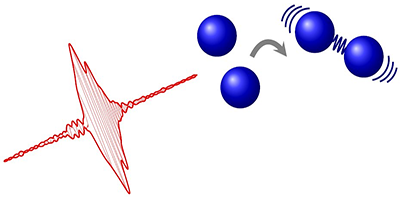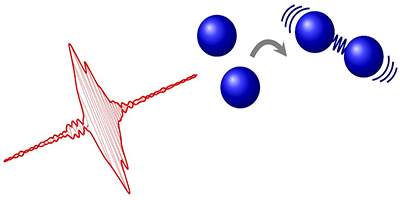On-Demand Chemical Bond Formation
The result of a chemical reaction is dictated by energy potentials and thermodynamics, but physicists have long hoped to steer reactions in new ways with coherent light from lasers. For the first time, researchers demonstrate the coherent control of the reaction by which two atoms form a molecule. The achievement—coupled with other photocatalyst tools—could potentially lead to a chemical assembly line, in which lasers slice and weld molecular pieces into a desired end product.
Coherent control of chemical reactions, which was first proposed thirty years ago, employs shaped laser pulses to place molecular reagents in states that promote a rare reaction process. Several groups have succeeded in controlling which bonds are cut in a target molecule (i.e., selective photodissociation). However, the coherent control of bond formation has proven more elusive.
A collaboration between experimentalists at Technion-Israel Institute of Technology in Haifa, Israel, and theorists at the University of Kassel in Germany has now controlled the photoassociation of a simple molecule. The team fired femtosecond laser pulses at a sample of magnesium atoms, which could absorb multiple infrared photons from the laser to form . This process is rare, but the researchers found they could alter the yield by changing the pulse shape. In particular, a positive chirp (i.e., a pulse whose frequency steadily increases with time) boosted the yield by a factor of 5 over an unshaped pulse. To explain this chirp dependence, the team constructed a model that showed the pulse shape affects transitions between vibrational levels in an intermediate state. With this understanding, they optimized the pulse shape using a feedback system, gaining a further in the reaction yield.
This research is published in Physical Review Letters.
–Michael Schirber





